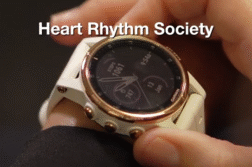BALTIMORE, Md. (Ivanhoe Newswire)— Abdominal aortic aneurysms are a swelling or ballooning in the major blood vessel that carries blood from the heart to the lower half of the body. For years, doctors have prescribed an antibiotic to prevent small aneurysms from getting bigger and bursting. A landmark new study may have doctors rethinking that treatment.
It’s a common condition that affects three percent of older Americans. Abdominal aortic aneurysm, a swelling in the aortic vessel.
“Talking to the doctors, they said this is life or death here, you’ve got to have it fixed,” shared AAA survivor Michael Renner.
Dr. Michael Terrin is a researcher with the University of Maryland School of Medicine. He and colleagues studied 254 patients with small abdominal aortic aneurysms. Half the group took 100 milligrams of doxycycline twice a day for two years. The other half took a placebo. CT scans showed no difference in aneurysm growth between either group.
“If you don’t have a very high expectation that a medicine is going to do a patient some good, you should really steer clear of it,” warned Michael Terrin, MDCM, MPH at the University of Maryland School of Medicine.
In fact, overuse could have a long-range negative impact.
“Doxycycline is an important antibiotic and if it’s used widely in a large percentage of the population every day, that’s an invitation to the development of antibiotic resistance,” explained Dr. Terrin.
Researchers say the findings could lead doctors to stop prescribing the drug to aneurysm patients.
Treatments for abdominal aortic aneurysms include surgery and endovascular repair. The researcher’s findings were published in JAMA, the Journal of the American Medical Association.
Contributors to this news report include: Cyndy McGrath, Executive & Field Producer; Kirk Manson, Videographer; Roque Correa, Editor.
To receive a free weekly e-mail on Medical Breakthroughs from Ivanhoe, sign up at: http://www.ivanhoe.com/ftk
MEDICAL BREAKTHROUGHS
RESEARCH SUMMARY
TOPIC: TREATING ABDOMINAL AORTIC ANEURYSMS: SKIP THE ANTIBIOTICS?
REPORT: MB #4776
BACKGROUND: An abdominal aortic aneurysm (AAA) is an enlarged area in the lower part of the major vessel that supplies blood to the aorta. The aorta runs from your heart through the center of your chest and abdomen and is the main vessel that supplies blood to the abdomen, pelvis, and legs. It is unknown the exact cause of an aneurysm, which occurs due to weakness in the wall of the artery. Some factors that can increase your risk of having this problem include smoking, high blood pressure, gender, or genetic factors. An AAA is most often seen in males over age 60 who have one or more risk factors. The larger the aneurysm, the more likely it is to break open or tear. Depending on the size of the aneurysm and how fast it’s growing, treatment varies from watchful waiting to emergency surgery. This type of aneurysm can be life-threatening.
(Source: https://www.mayoclinic.org/diseases-conditions/abdominal-aortic-aneurysm/symptoms-causes/syc-20350688 and https://medlineplus.gov/ency/article/000162.htm)
DIAGNOSIS AND TREATMENT: To reach a diagnosis for an AAA, your doctor will review medical and family history and do a physical exam. If there is any suspicion, specialized tests can confirm it. An abdominal ultrasound test is most commonly used to diagnose an AAA. During the test, a patient lies on a table while a technician moves a wand around the abdomen. Ultrasound uses sound waves to send images to a computer screen. A CT scan is a painless test which can provide your doctor with clear images of your aorta and can detect the size and shape of the aneurysm. With an MRI, you lie on a movable table that slides into a machine. An MRI uses a magnetic field and pulses of radio wave energy to make pictures of your body. The goal of treatment is either to monitor the aneurysm or surgery. When monitoring, you’ll have regular appointments to check if the aneurysm is growing, and treat other conditions such as high blood pressure, which could worsen the aneurysm. Surgery or repair is recommended if the aneurysm is 4.8 to 5.6 centimeters or larger, or if it’s growing quickly. Surgery might also be recommended if you have symptoms such as stomach pain or you have a leaking, tender or painful aneurysm.
NEW INCISIONLESS PROCEDURE: Boston Medical Center is one of two sites in Boston offering a non-invasive, incisionless procedure for AAA. To repair the artery, the surgeon utilizes a small puncture site in the skin, thus avoiding the need for an incision. The patient typically goes home the day after surgery and has minimal, if any, discomfort. “It is truly amazing that the operation to treat an AAA can now be performed without any incisions,” said Alik Farber, MD, clinical chief of Vascular Surgery at BMC, and associate professor of surgery at BUSM. “At times, patients find it hard to believe that their aneurysm was repaired because the procedure is so non-invasive. Not everyone is a candidate, however. Patients have to have large enough femoral arteries and minimal arterial calcification.”
FOR MORE INFORMATION ON THIS REPORT, PLEASE CONTACT:
DEBORAH KOTZ
UNIVERSITY OF MARYLAND SCHOOL OF MEDICINE
(410) 804-0054
If this story or any other Ivanhoe story has impacted your life or prompted you or someone you know to seek or change treatments, please let us know by contacting Marjorie Bekaert Thomas at mthomas@ivanhoe.com




